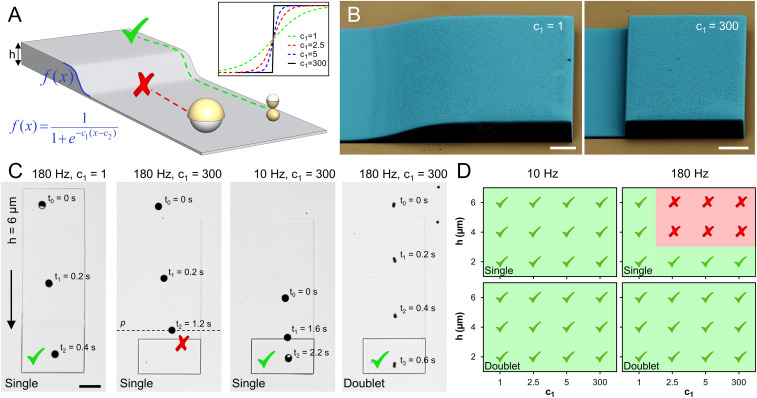Fig. 3.
Propulsion of microrollers on microtopographical surfaces in static fluid conditions. (A) The microrollers are driven toward and over microfabricated topographical structures with constant profile in depth. (Inset) Slopes of the structures were designed according to basic sigmoid function. Microrollers that could overcome the structures were regarded as successful. (B) Pseudocolored SEM images of the microfabricated topographical structures. (Scale bars, 10 µm.) (C) Time-lapse images of the microroller propulsion on microfabricated structures (h = 6 µm). Single microrollers actuated at 180 Hz were able to locomote over structures with the mildest slope (c1 = 1) at high frequencies but failed at steep structures (c1 = 300). However, when actuated at 10 Hz, the same microrollers were able to climb the steep structures (c1 = 300). On the other hand, doublet microrollers propelled over all the structures at high frequencies (180 Hz). The black arrow shows the locomotion direction. The p denotes the stable point at which the microroller is spinning without any translation. (Scale bar, 25 µm.) (D) Performance diagrams of microrollers on structures with varying slopes and heights show that the doublet microrollers can move over all the structures at both low and high actuation frequencies.

